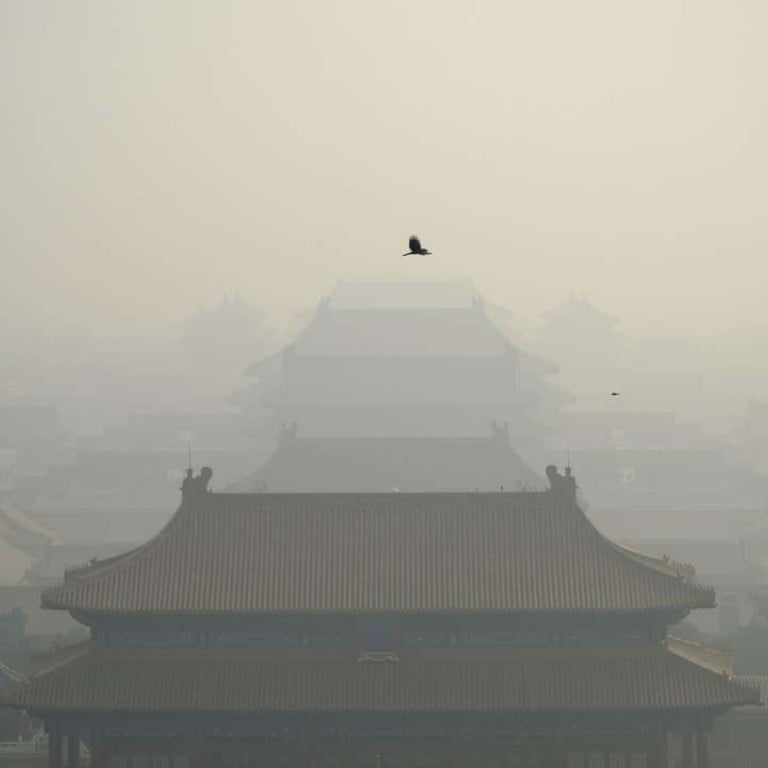
China’s polluted capital may be scaling back its smog clean-up
Acting mayor Cai Qi has cut city’s 2020 targets for reducing toxic particulates, suggesting that 2022 goals will not be met
China’s smog-laden capital may be quietly scaling back its clean-up ambitions, now that the city looks set to miss its 2017 target for lowering levels of harmful particulate pollutants known as PM2.5.
Instead, the municipal government, under its newly appointed acting mayor, Cai Qi, approved a more moderate 2020 target last week for reducing the smog-inducing pollutants.
Weather authorities have forecast that from Tuesday, Beijing will once again be shrouded in smog, this time until Friday.
In 2013, amid mounting public concern and a widely lauded national campaign to tackle smog, the State Council – China’s cabinet – set clean-up targets to be achieved by 2017 for three major urban clusters, namely the Beijing-Hebei-Tianjin area, and the Yangtze and Pearl River Deltas.
In particular, the cabinet document ordered Beijing to cut its annual levels of PM2.5 – airborne particles smaller than 2.5 microns in diameter that can lodge deep in people’s lungs – to “around 60 micrograms per cubic metre”, from the level of 89.5 micrograms in 2013.
Since Cai’s appointment as both acting mayor and deputy mayor on October 31, Beijing has set a new 2020 target that will bring PM2.5 levels down to 56 micrograms per cubic metre – a difference of only about 4 micrograms – the municipal mouthpiece Beijing Daily reported.
An official report published in July highlighted Beijing’s slow progress on cleaning up the pollutants, which cause hundreds of thousands of premature deaths every year in China, even though many other mainland cities are expected to meet their reduction targets.
The review conducted by Chinese Academy of Engineering said Beijing had reduced its PM2.5 levels by only 30 per cent of its target up to the end of 2015, when the city’s PM2.5 levels stood at 80.6 micrograms per cubic metre.
If Beijing does aim to meet its 2017 goal, then it will have to reduce its PM2.5 levels by 10 micrograms per cubic metre each year in both 2016 and 2017 – an almost impossible target at its current reduction rate.
The report, compiled by more than 50 government-backed experts, said the capital’s reliance on suburban residents burning coal for heating, and its imported air pollution from nearby cities, especially those in Hebei province, were the main reasons for Beijing’s limited progress.
Dong Liansai, a climate and energy campaigner at Greenpeace, said: “Beijing’s government needs to face up to the 2017 goal set by the State Council and design its emission reduction plans for 2018 to 2020 so that they conform to the existing goal.”
Hu Xingdou, a professor at the Beijing Institute of Technology, said inconsistency over Beijing’s pollution reduction targets was due to a lack of adequate accountability, since officials often made promises without worrying about whether such goals could be achieved.
Promises to clean up Beijing’s air, so that PM2.5 levels are reduced to 30 micrograms per cubic metre, formed the centrepiece of the nation’s bid to host the 2022 Winter Olympics.
Yet if Beijing sets its 2020 target at only 56 microgram, it will face even more challenges over the following two years.

